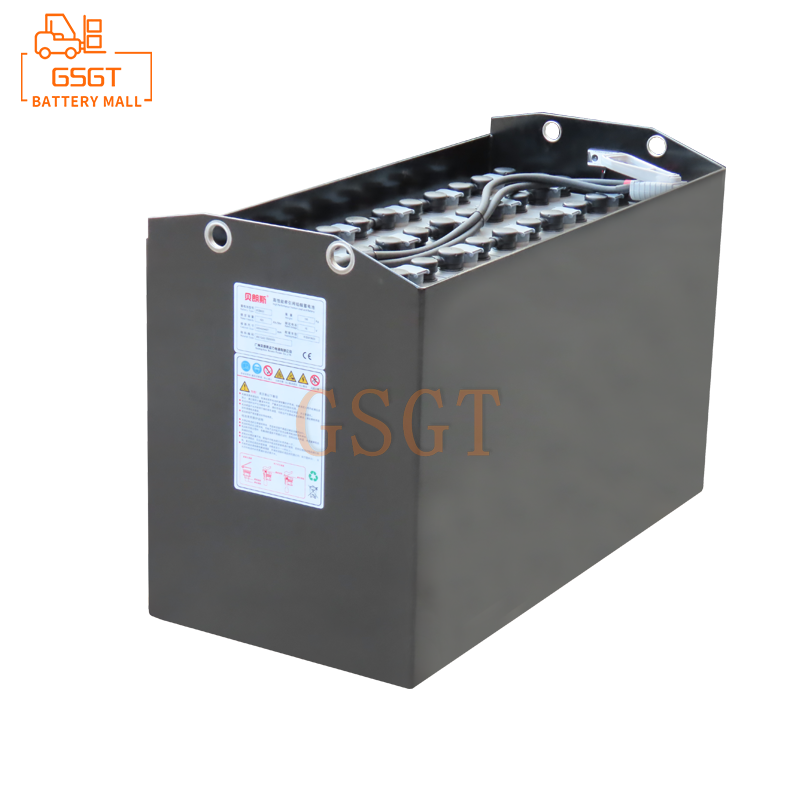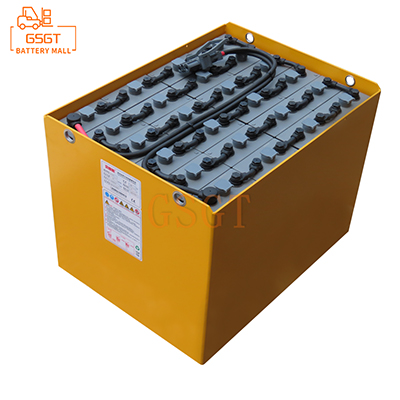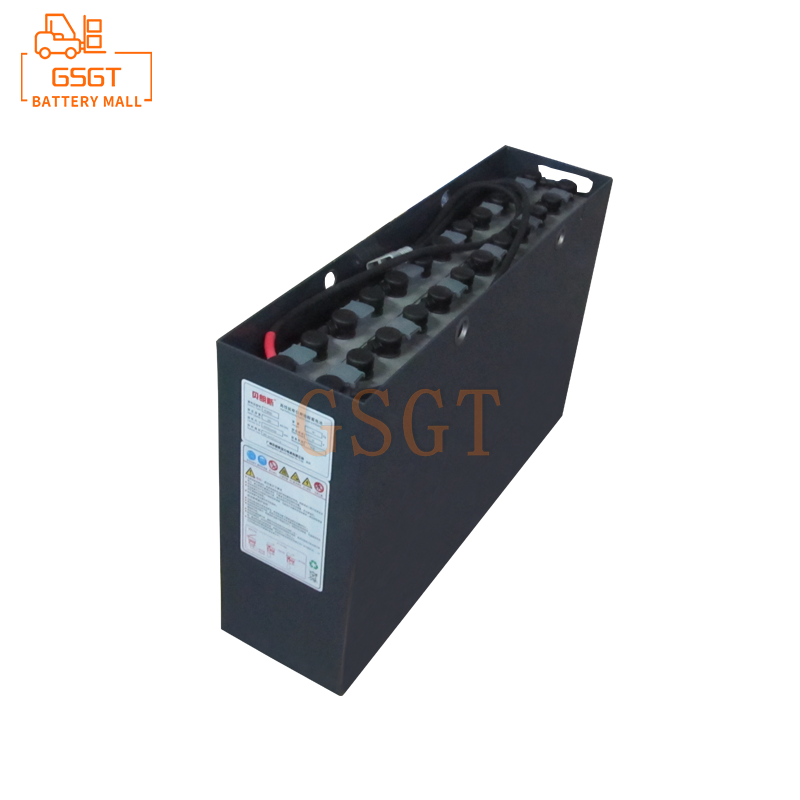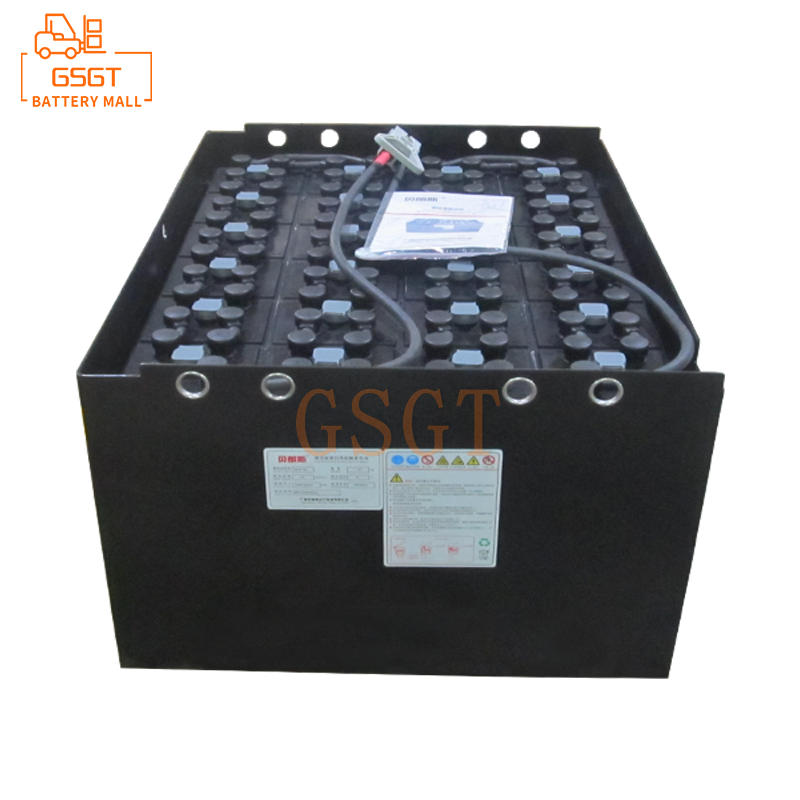Time:2025-04-29 10:48:38
Browse:835
Introduction
In the modern logistics and warehousing field, forklifts, as important handling equipment, the performance of their power sources is directly related to work efficiency and operating costs. Lead-acid batteries occupy an important position in the power system of forklifts due to their advantages such as low cost and mature technology. However, the internal resistance of lead-acid batteries is a key factor affecting their performance. A thorough exploration of the impact of internal resistance on the performance of lead-acid batteries used in forklifts is of great significance for optimizing forklift operation, extending battery life, and reducing usage costs.
The composition of the internal resistance of lead-acid batteries
Ohm resistor
The ohm resistor is composed of the resistances of the electrode materials, electrolyte, separator and connecting components inside the battery. The conductivity of electrode materials directly affects the magnitude of ohmic resistance. For instance, the plates of lead-acid batteries typically use lead and lead alloys, which have relatively limited conductivity. As a medium for ion transport, the concentration, temperature and purity of the electrolyte have a significant impact on resistance. When the concentration is high, the number of ions increases, which helps to reduce the resistance. However, a decrease in temperature will increase the viscosity of the electrolyte, impede ion migration and raise the resistance. The diaphragm serves to isolate the positive and negative electrodes to prevent short circuits. Its material and thickness also contribute a certain amount of resistance. For instance, the resistance characteristics of glass fiber diaphragms are superior to those of diaphragms made of other materials. The resistance of components such as connection strips and terminals is related to the material, size and connection process. A good connection process can reduce contact resistance and decrease the total value of ohmic resistance.
Polarization resistance
Polarization resistance includes electrochemical polarization resistance and concentration polarization resistance. Electrochemical polarization stems from the sluggishness of electrochemical reactions on the electrode surface during battery charging and discharging. Take discharge as an example. During the process where lead at the negative electrode reacts with sulfate ions to form lead sulfate, if the reaction rate cannot keep up with the electron transfer rate, it will lead to the accumulation of charge on the electrode surface, forming an additional potential difference and increasing resistance. Concentration polarization is due to the limited diffusion rate of ions in the electrolyte. When the battery discharges at a high current, the ions on the surface of the plates quickly participate in the reaction, while the ions in the electrolyte body cannot be replenished in time, resulting in a difference in ion concentration between the surface of the plates and the electrolyte body, and forming concentration polarization resistance. This polarization resistance changes dynamically during the charging and discharging process. The polarization resistance increases during charging, and it also changes over time due to the variation of concentration difference during discharging.
Factors affecting the internal resistance of lead-acid batteries
The usage time of the battery and the number of charge and discharge cycles
As the usage time increases and the number of charge and discharge cycles rises, the internal resistance of lead-acid batteries gradually increases. During the long-term charging and discharging process, the active substances on the plates constantly undergo chemical reactions, which may lead to phenomena such as shedding and sulfidation. For instance, lead on the negative plate is prone to form lead sulfate crystals after repeated discharge. These crystals gradually accumulate, blocking the pores of the plate and hindering the contact between ions in the electrolyte and the active substance, resulting in a simultaneous increase in polarization resistance and ohmic resistance.
The density, temperature and liquid level of the electrolyte have a significant impact on the internal resistance of the battery. Both excessively high and low electrolyte densities are detrimental to battery performance. An appropriate density range can ensure ion transport efficiency and electrochemical reaction activity. If the density deviates from the optimal value, the ohmic resistance will increase. In terms of temperature, at low temperatures, the viscosity of the electrolyte increases significantly, ion migration is difficult, and the internal resistance increases significantly. For example, below 0℃, for every 10℃ decrease in temperature, the internal resistance increases by approximately 15%. High temperatures will accelerate the decomposition of the electrolyte and the corrosion of the plates, which also leads to an increase in internal resistance. When the temperature exceeds 40℃, the corrosion of the plates intensifies and the internal resistance rises further. For every 10℃ increase, the battery life may be reduced by approximately 50%. A decrease in liquid level will cause an uneven distribution of ion concentration in the electrolyte, increase local resistance, and may also lead to partial exposure of the plates, accelerate sulfation of the plates, and increase internal resistance.
The physical state of the plates
The thickness and area of the plates as well as the adhesion of the active material affect the internal resistance. Due to the short ion diffusion path, the polarization resistance of thin plates is relatively small. Under the same capacity, the number of plates in thin plate batteries is greater than that in thick plate batteries. When discharged at the same current, the current density of thin plate batteries is small, the polarization of each electrode is small, and the internal resistance is significantly smaller. Their cycle life is usually 20% to 30% longer than that of thick plate batteries. The larger the plate area, the greater the contact area between the active substance and the electrolyte, the more substances participate in the electrochemical reaction, and the internal resistance decreases. When the active substances on the plates fall off due to factors such as vibration and charge and discharge stress, the effective reaction area decreases and the internal resistance increases, seriously affecting the battery performance.
The influence of internal resistance on the performance of lead-acid batteries
The impact on battery capacity
The increase in internal resistance has a significant negative impact on battery capacity. During the discharge process, the internal resistance will consume some electrical energy. According to the formula, the greater the internal resistance, the more power is consumed. This part of the energy cannot do work externally, resulting in a reduction in the actual output capacity. When the internal resistance exceeds 50% of the initial value, the battery capacity usually decays to less than 50% of the nominal value, failing to meet the normal load requirements of the forklift.
The influence on the charging and discharging efficiency of batteries
During charging, the voltage drop caused by internal resistance reduces the effective voltage actually applied across the battery for electrochemical reactions. To achieve the same charging state, a higher charging voltage and a longer charging time are required, resulting in a decrease in charging efficiency. During discharge, the internal resistance also causes a voltage drop, making the output voltage lower than the theoretical value and reducing the efficiency of electrical energy output. The existence of internal resistance will also cause the battery to generate more heat during charging and discharging, consume additional energy and further reduce efficiency. Take the charging of forklift batteries as an example. After the internal resistance increases, a battery that originally could be fully charged in 6 hours may take 8 to 10 hours to be fully charged. Moreover, during the charging process, the battery generates a lot of heat, which not only wastes electricity but may also affect the battery's lifespan.
The impact on battery service life
The increase in internal resistance leads to intensified heating of the battery during charging and discharging. The long-term high-temperature environment accelerates the corrosion of the plates, the decomposition of the electrolyte and the shedding of active substances. The corrosion of the plates damages the grid structure and reduces the capacity to carry active substances. The decomposition of the electrolyte leads to water loss, affecting ion transport. The shedding of active substances directly reduces the substances involved in electrochemical reactions. These factors interact with each other, creating a vicious cycle that greatly shortens the battery's service life. When the internal resistance deviation of the battery pack exceeds 15%, the battery life may be shortened by more than 30%. For instance, a lead-acid battery for a forklift that can be used for 3 to 5 years under normal circumstances may need to be replaced every 1 to 2 years if its internal resistance abnormally increases, significantly raising operating costs.
The influence on the power performance of forklifts
When forklifts are in operation, the demand for high-current discharge is frequent. The increase in internal resistance causes the battery's instantaneous output voltage to drop, making it unable to provide stable and sufficient power to the forklift motor. As a result, the forklift starts slowly, accelerates weakly, and has a decreased climbing ability. When forklifts are transporting heavy objects and climbing slopes, they may encounter the risk of stopping or even sliding due to excessive internal resistance of the battery, which seriously affects the safety and efficiency of the operation. At the same time, excessive internal resistance may also cause fluctuations in motor current, affecting the motor's lifespan and increasing equipment maintenance costs.
Measures to reduce the internal resistance of lead-acid batteries and improve their performance
Optimize the charging strategy
It adopts intelligent charging technology to adjust the charging voltage and current according to the real-time status of the battery. For instance, at the initial stage of charging, a large current is used for fast charging. When the battery is nearly fully charged, the current is reduced for trickle charging. This not only shortens the charging time but also reduces polarization and lowers internal resistance. Avoid overcharging and undercharging. Overcharging will accelerate the decomposition of the electrolyte and the corrosion of the plates, while undercharging is likely to cause sulfation of the plates, both of which increase the internal resistance. Regular deep charging and discharging of the battery can ensure that the active substances on the plates react fully, reduce the accumulation of lead sulfate crystals, and lower the internal resistance. It is generally recommended to conduct a deep charge and discharge cycle every 2 to 3 months.
Maintain the electrolyte
Regularly test the density of the electrolyte and adjust it according to the season and usage conditions. When the temperature is high in summer, appropriately reduce the density of the electrolyte to prevent excessive evaporation of water and corrosion of the plates. When the temperature is low in winter, appropriately increase the density to enhance the battery's low-temperature performance. Keep the electrolyte level within the normal range, replenish distilled water in time, and avoid exposing the plates. At the same time, ensure the purity of the electrolyte to prevent impurities from mixing in, so as to avoid the formation of local micro-batteries on the surface of the plates and increase the internal resistance. Professional electrolyte filtration equipment can be used to filter the electrolyte regularly to remove impurities.
Use and maintain the battery reasonably
Avoid prolonged high-current discharge of forklifts, such as frequent rapid acceleration and heavy-load climbing. Rationally plan the forklift operation process, reduce unnecessary high-load operation, and slow down the growth rate of battery internal resistance. Regularly inspect the appearance of the battery to check for any abnormal phenomena such as leakage or bulging. Promptly address any loose connection points to ensure good electrical connection and reduce contact resistance. Regular maintenance of the battery should be carried out, including cleaning the battery surface and checking the corrosion of the terminal posts, to prevent an increase in internal resistance due to surface dirt and terminal post corrosion. In addition, in low-temperature environments, insulation measures can be taken for batteries, such as installing battery insulation covers, to reduce the impact of temperature on internal resistance.
Conclusion
The internal resistance of lead-acid batteries used in forklifts is the core factor affecting their performance, exerting negative effects on battery capacity, charge and discharge efficiency, service life, and the power performance of forklifts through various channels. Understanding the composition of internal resistance, its influencing factors and the laws of its impact on performance, and taking measures such as optimizing charging strategies, maintaining the electrolyte, and rationally using and maintaining the battery can effectively reduce internal resistance, improve the performance of lead-acid batteries, extend the battery's service life, enhance the operational efficiency of forklifts, and lower the operating costs of logistics and warehousing enterprises. In the future, with the continuous development of technology, further research on methods to reduce the internal resistance of lead-acid batteries, as well as the development of new materials and battery management systems, will provide a broader development space for the application of lead-acid batteries in forklifts.

$2450

$3405

$1060

$5140

MESSAGE
Professional And Efficient
Security
Affordable Price
Professional Services